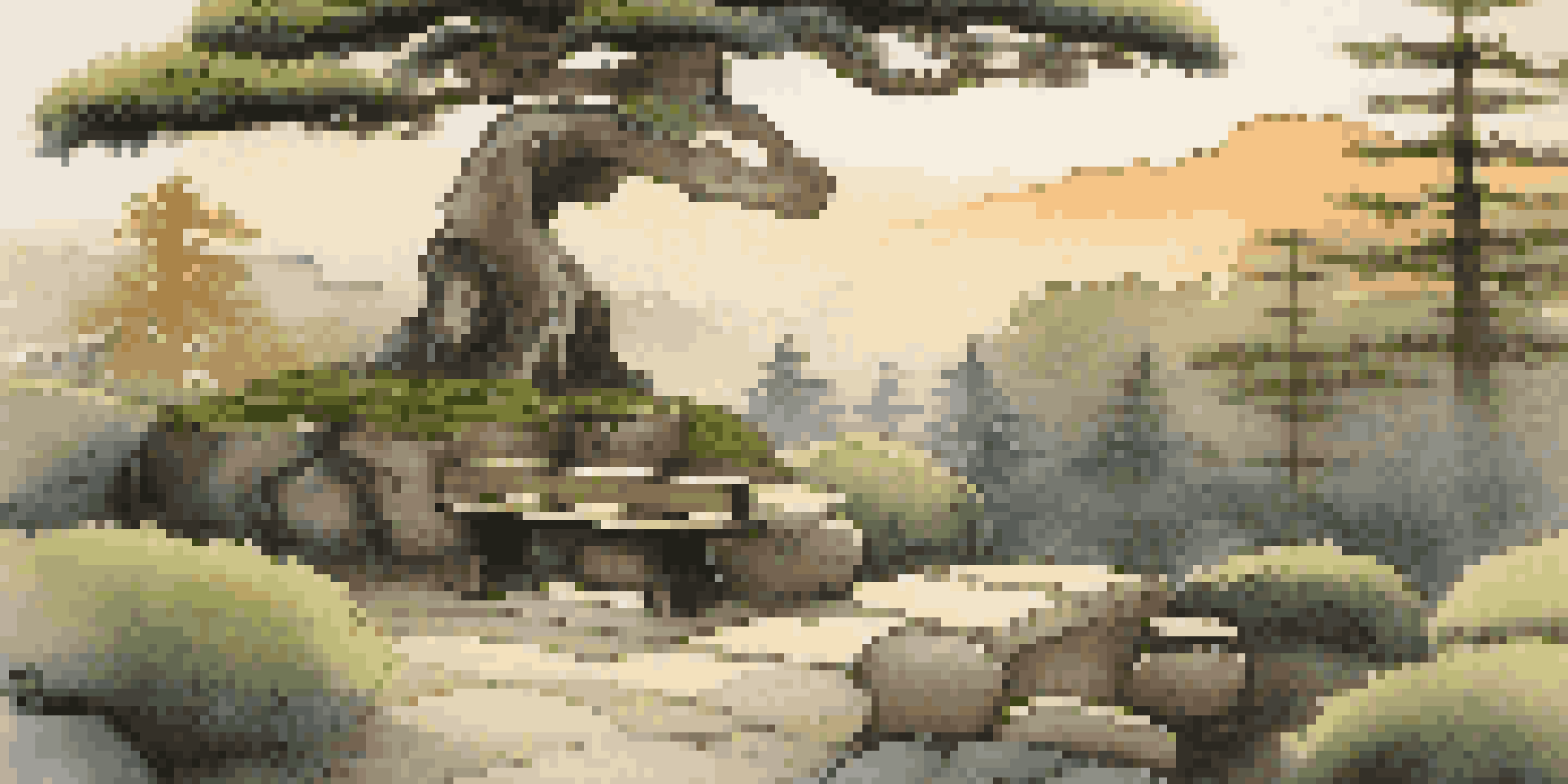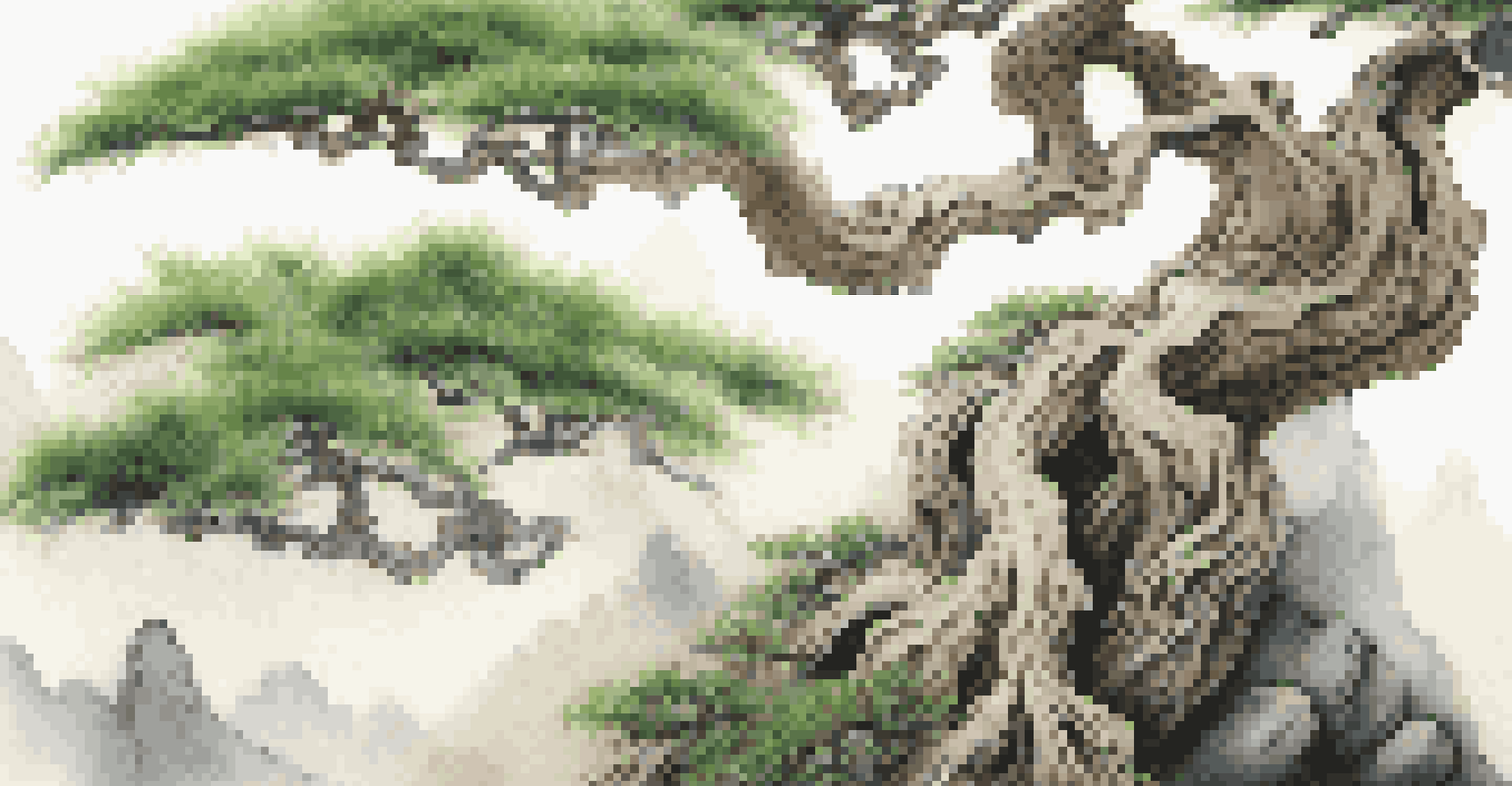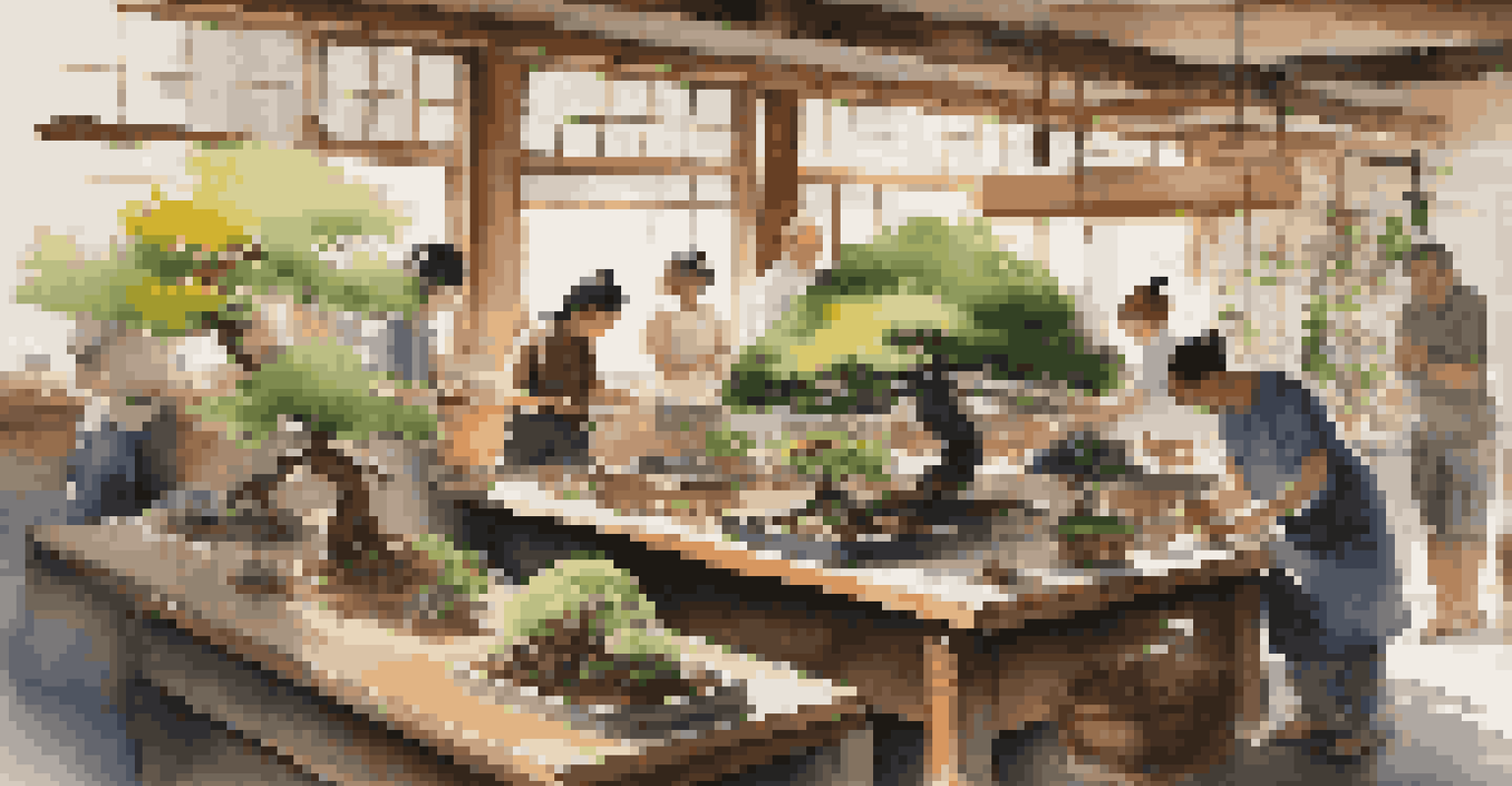Bonsai in Different Cultures: A Global Perspective on Care

The Origins of Bonsai: A Journey Through Time
Bonsai, a word that means 'planted in a container' in Japanese, has roots that trace back over a thousand years. Though it is often associated with Japan, its origins can be found in ancient Chinese gardening techniques. The art was brought to Japan through cultural exchanges, where it evolved into the intricate practice we recognize today.
The creation of a bonsai tree is a journey, not a destination. It teaches us patience and the beauty of growth.
As it traveled across borders, bonsai became a symbol of patience and creativity, reflecting the values of each culture it touched. For instance, in China, bonsai is often linked to spiritual growth and harmony with nature. This connection speaks to the universal desire for balance and tranquility in our lives.
Today, bonsai continues to flourish globally, with artists and enthusiasts embracing this art form in various ways. Whether it's a simple ficus or a meticulously crafted pine tree, each bonsai carries the essence of the culture it represents, reminding us of the beauty found in diversity.
Bonsai in Japan: A National Treasure
In Japan, bonsai is more than just a hobby; it's considered an art form and a cultural treasure. The meticulous care and artistry involved in bonsai reflect the Japanese principles of harmony and balance. Each tree is treated with reverence, symbolizing nature's beauty and the artist's dedication.

Japanese bonsai often emphasizes simplicity and minimalism, aligning with the aesthetic concepts of 'wabi-sabi,' which celebrates imperfections and transience. This philosophy is evident in the way bonsai trees are shaped to mimic the natural world, creating a sense of peace and contemplation in their presence.
Bonsai's Cultural Significance
Bonsai represents a blend of artistic expression and cultural values, reflecting the unique philosophies of patience and harmony from various traditions.
Moreover, bonsai exhibitions and competitions are popular events, showcasing the skill and creativity of bonsai artists. These gatherings foster a sense of community and appreciation for this cherished art, allowing enthusiasts to share techniques and philosophies while deepening their connection to nature.
Chinese Influences: Spiritual Connections with Bonsai
In China, bonsai, known as 'penjing,' carries rich historical and spiritual significance. The practice of penjing dates back to the Tang Dynasty, where it was viewed as a way to capture the essence of nature. Much like bonsai, penjing emphasizes the artistic representation of landscapes in miniature form.
Bonsai is not just about growing trees; it’s about cultivating a state of mind.
Chinese penjing often incorporates elements of symbolism, such as rocks representing mountains or water that signifies purity. This reflects the ancient belief in the interconnectedness of nature and humanity, where each tree serves as a reminder of the natural world’s beauty and fragility.
The care of penjing is equally meticulous, requiring patience and an understanding of the plant's needs. As practitioners tend to their trees, they engage in a meditative practice, fostering a deep connection to the environment and a sense of inner peace.
Bonsai in Western Cultures: A Growing Trend
In recent years, bonsai has gained popularity in Western cultures, attracting a diverse audience of plant enthusiasts. Many view bonsai as a way to bring a touch of nature indoors, transforming spaces into calming retreats. This growing interest has led to an increase in workshops and classes dedicated to the art of bonsai cultivation.
Western bonsai often incorporates a blend of traditional techniques and contemporary styles. Artists experiment with various species and innovative designs, resulting in a unique interpretation of this ancient practice. This fusion of old and new reflects a broader trend of embracing global influences in gardening.
Mindfulness Through Bonsai Care
Caring for bonsai fosters mindfulness and meditation, offering practitioners a therapeutic connection to nature and promoting personal well-being.
Moreover, bonsai's accessibility has made it a favorite among urban dwellers seeking to reconnect with nature. As more people cultivate their own bonsai, they discover not only the joy of nurturing a living art form but also the therapeutic benefits of gardening, reinforcing the idea that bonsai is a practice for everyone.
The Art of Care: Techniques Across Cultures
Caring for bonsai involves a blend of art, science, and a deep understanding of plant biology. Across cultures, the techniques may vary, but the core principles remain the same: nurturing the tree to maintain its health and beauty. Regular watering, pruning, and wiring are essential practices that help shape the tree and promote growth.
In Japan, meticulous pruning techniques are often taught through generations, emphasizing the importance of timing and precision. Conversely, Western approaches may prioritize more casual, experimental styles, where the focus is on personal expression rather than strict adherence to tradition.
Regardless of cultural differences, the ultimate goal is to achieve a harmonious balance between the tree's growth and its aesthetic form. This shared understanding of care highlights the universal appeal of bonsai, bridging gaps between cultures while fostering a global community of enthusiasts.
Bonsai and Meditation: A Mindful Practice
Bonsai care is often intertwined with mindfulness and meditation, encouraging practitioners to slow down and engage with nature. The act of tending to a bonsai tree can be a meditative experience, allowing individuals to focus on the present moment while nurturing their plants. This connection to nature promotes relaxation and stress relief.
In many cultures, bonsai is seen as a form of therapy, providing a creative outlet for self-expression and emotional well-being. As individuals cultivate their trees, they often find a sense of purpose and fulfillment that extends beyond the act of gardening itself.
Bonsai's Global Evolution
As bonsai spreads worldwide, it evolves through diverse interpretations, merging traditional techniques with contemporary styles while remaining a cherished art form.
Furthermore, bonsai workshops often emphasize the meditative aspects of the practice, encouraging participants to embrace patience and mindfulness. This holistic approach to bonsai care not only enhances the beauty of the trees but also enriches the lives of those who cultivate them.
Conclusion: The Universal Appeal of Bonsai
Bonsai transcends cultural boundaries, resonating with people around the world as a symbol of patience, creativity, and connection to nature. Each culture adds its own unique flavor to the art, enriching the practice and fostering a global appreciation for this living art form. From Japan's meticulous artistry to the experimental styles emerging in the West, bonsai continues to evolve while staying true to its roots.
As we explore the rich tapestry of bonsai across cultures, we come to understand its significance as not just a hobby, but a way of life. The lessons learned through bonsai care—patience, dedication, and mindfulness—are valuable in our fast-paced world.

Ultimately, bonsai invites us all to slow down, appreciate the beauty of nature, and discover our place within it. Whether you're a seasoned artist or a curious beginner, the world of bonsai offers endless opportunities for growth and connection, reminding us that art and nature can coexist harmoniously.